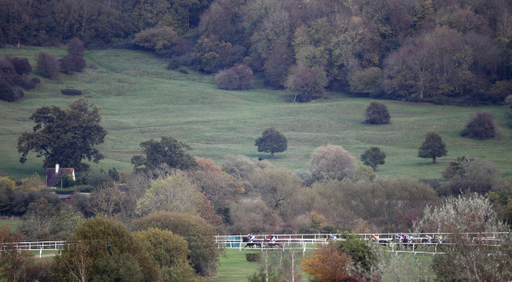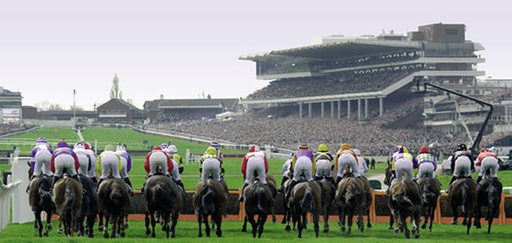Believe it or not, the grounds at Prestbury Park in Cheltenham are so spacious, they have managed to fit three race courses in their capacity.
These three tracks - all active during the Cheltenham Festival, are known as the old course, the new course and the Cross Country course.
The old course plays host to the majority of the action on the Tuesday and Wednesday of the Festival - the first two days of the meeting, before the new course takes over completely for the Thursday and Friday races at the most prestigious and anticipated week in jump's racing - day's three and four.
Meanwhile the Cross Country course; which is used only once at the Festival, hosts the Glenfarclas Cross Country Chase on the second day.
It finishes on the main course proper but takes place across all stretches of the terrain at Prestbury Park, featuring many different types of obstacles including Aintree National fences replicas, offering a unique test to the runners.
The old and new courses are the most important ones nonetheless.
Both are left-handed, and conclude with a stiff finish up the iconic Cheltenham hill.

The old course is considered to be more of a test of speed, whilst the new course is considered to place much more emphasis on stamina and longevity. The hurdles course in particular, has very few hurdles in the latter stages of the contest.
The Old Course is also used each season for The Showcase Meeting and the November Meeting - both early on in the season. Horses who race prominently often fare well on the chase and hurdle courses, especially in shorter-distance races.
The Old Course is slightly sharper than the New Course. It has only four starting positions and boasts a fence in front of the stands going out into the country.
Naturally quicker, this course is used for the likes of the Champion Hurdle and the Champion Chase, as they are contested over the minimum distance.
Simultaneously, the New Course is also used each season for The International Meetings, on New Year's Day, Festival Trials Day and the April and May meetings to conclude the campaign.
On the New Course, the hurdles track has just two flights in the last six or seven furlongs, resulting in more emphasis being pressed on endurance; large-field races over two miles often go to hold-up horses, as there can be a tendency to go for home too soon.

This course which tests grit and resilience, stages both the Stayers Hurdle and the Cheltenham Gold Cup. It has a longer run-in, and is never over until a horse meets the winning post.
Finally, the Cross Country Steeplechase Course is used for one race each at The November Meeting, The International and the Cheltenham Festival each season.
The Glenfarclas Series includes qualifying events in Ireland at Punchestown, in France at Pau and the three Cheltenham events in November, December and March.
It rewards any competitor running in all three countries in any nominated race with double prize money at the Festival.
Usually, the commentators let-alone the spectators may lose sight of the runners during any cross-country event.
The Cross Country Course sort of represents a 'figure of eight', with essentially three completed laps.
In running, the horses meet obstacles like no other, including the cheese wedges, railed hedges and several different ditches, banks and jumps.
Any cross country event can be a valid trial for the Grand National, held at Aintree in April.

